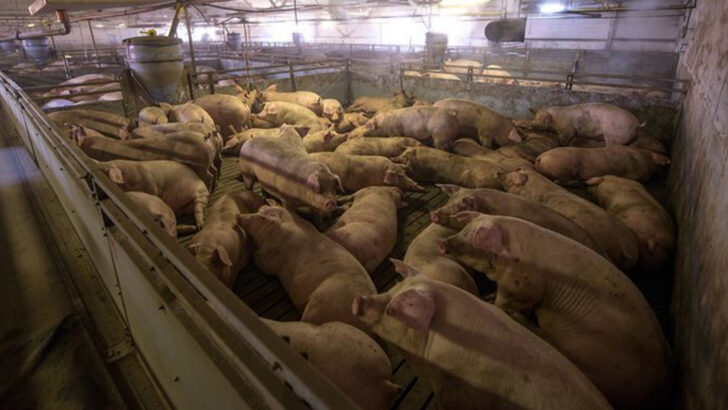If you did these things to a dog, you’d be in jail.
No question. No debate. No “but it’s for food.”
Yet every single day, behind locked barn doors, animals live in misery that would spark outrage if it happened to a cat or parakeet.
We cradle our pets in sweaters, gourmet treats, and birthday parties—
while pigs scream in crates so small they can’t turn around.
While calves are torn from mothers hours after birth.
While chickens are pumped so full of growth hormones their legs snap under them.
The double standard is brutal.
And it’s hidden in plain sight, dressed up in words like “agriculture” and “standard practice.”
But make no mistake—
these 13 practices would get you arrested if your victims had fur and lived on your couch.
Brace yourself.
This list isn’t pretty, but it’s real.
Confinement in Small Cages
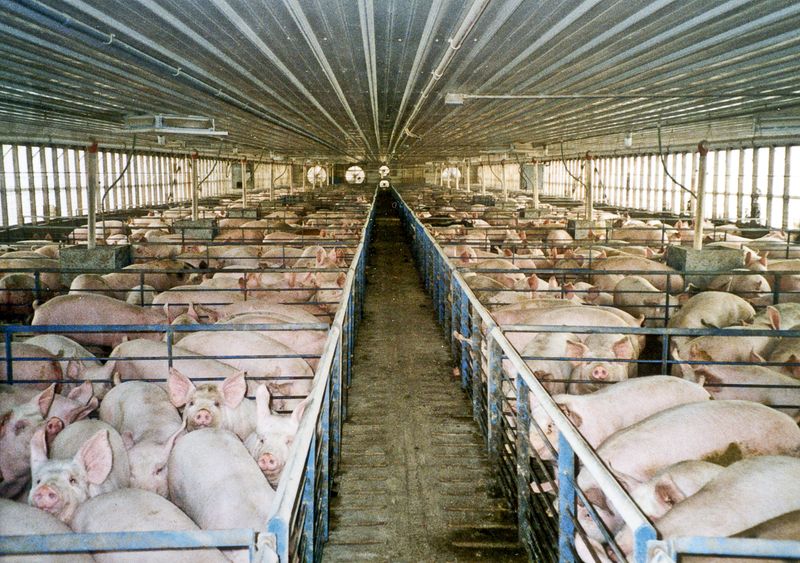
Imagine a beloved cat housed in a cramped cage barely larger than itself for its entire life, unable to stretch or roam. Such confinement is a reality for many farm animals like chickens and pigs.
These creatures often spend their lives in spaces where movement is severely restricted, leading to muscle atrophy and stress-related behaviors. The psychological impact is significant, manifesting in repetitive actions or aggression.
In contrast, pet laws demand humane space allocations, recognizing the need for physical and mental stimulation, a courtesy not extended to factory-farmed animals.
Forced Rapid Growth
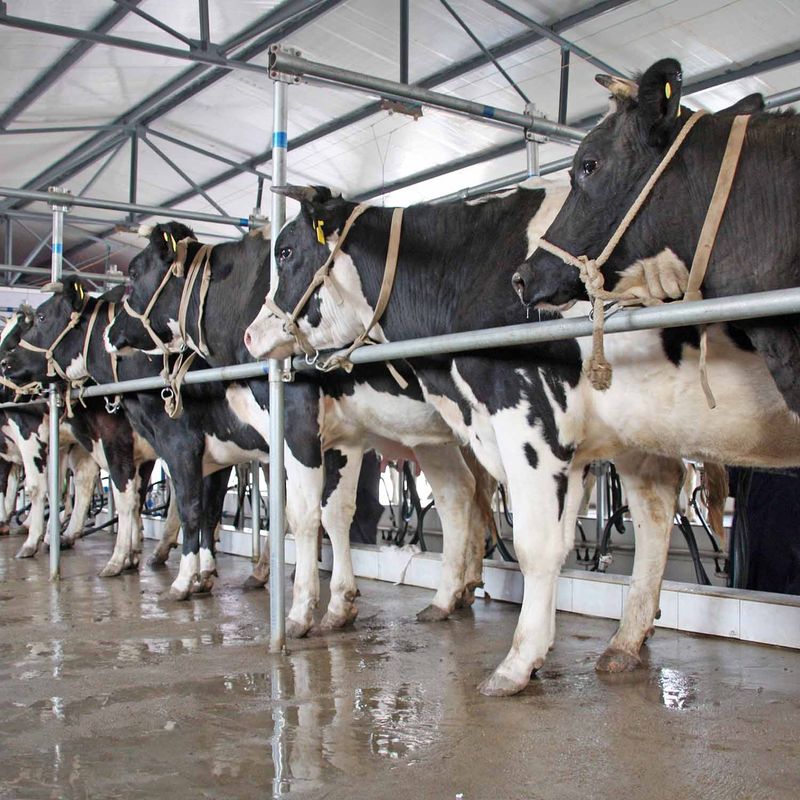
Consider a puppy forced to grow at an accelerated rate, resulting in joint pain and health issues. This is a grim reality for many farm animals like broiler chickens bred for rapid weight gain.
Such growth strains their skeletal systems, often leading to painful conditions or inability to support their own body weight.
While pets are nurtured with health in mind, factory-farmed animals are pushed to unnatural limits, prioritizing productivity over wellbeing. The disparity in treatment highlights the need for ethical reevaluation in farming practices.
De-beaking and De-horning
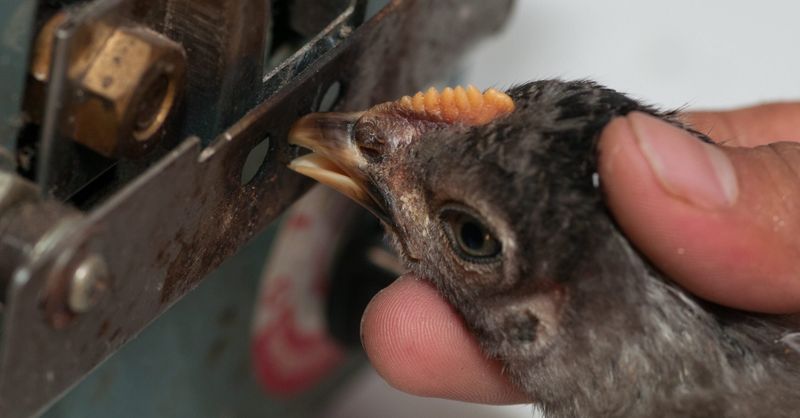
Imagine trimming a dog’s teeth without anesthesia to prevent biting—unthinkable, yet similar practices like de-beaking are common in poultry farms.
These procedures, often performed without pain relief, cause acute pain and long-term distress. De-horning, used in cattle farming, mirrors this cruelty, performed to minimize space and injuries.
For pets, such actions would be deemed cruel and illegal, yet farm animals endure them routinely. The moral inconsistency is glaring, prompting a need for policy change.
Tail Docking and Ear Notching
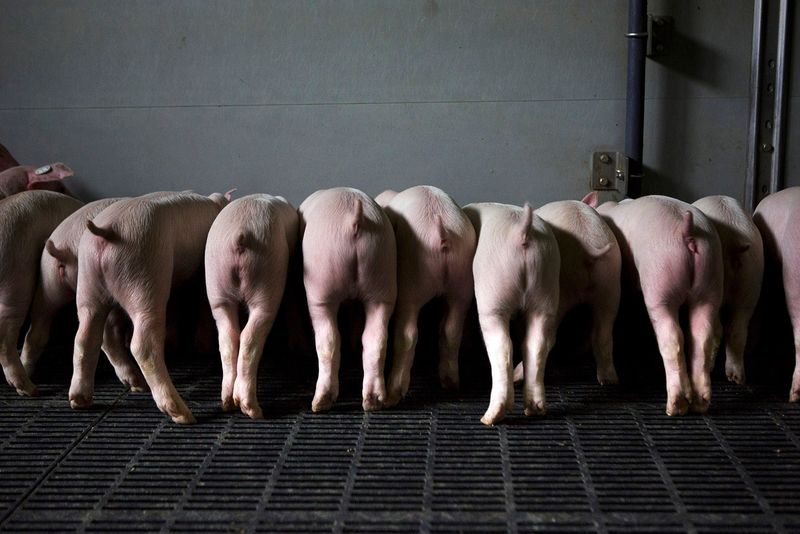
Imagine docking a puppy’s tail without any pain relief—a practice that is banned in many pet care scenarios yet is routine in factory farming. Piglets are often subjected to tail docking and ear notching to prevent biting and for identification purposes.
Performed without anesthesia, these procedures are painful and stressful. Unlike pets, which receive humane treatment and laws against such practices, farm animals are often overlooked. The discrepancy calls for urgent reform in animal welfare standards across industries.
Artificial Insemination
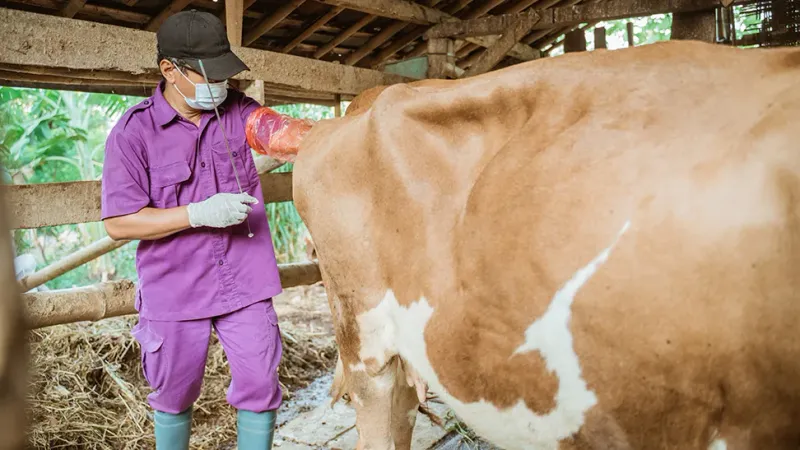
The concept of artificially inseminating a pet dog might raise eyebrows and ethical concerns, yet it is a widespread practice in dairy and pig farming.
Animals are restrained and subjected to this invasive process, often causing discomfort and stress. While seen as a breeding tool, it disregards the animals’ autonomy and natural behaviors.
In contrast, pet breeding involves careful planning and consideration of animal welfare. The ethical divide between farm and pet treatments underscores the need for humane practices in agriculture.
Overcrowding
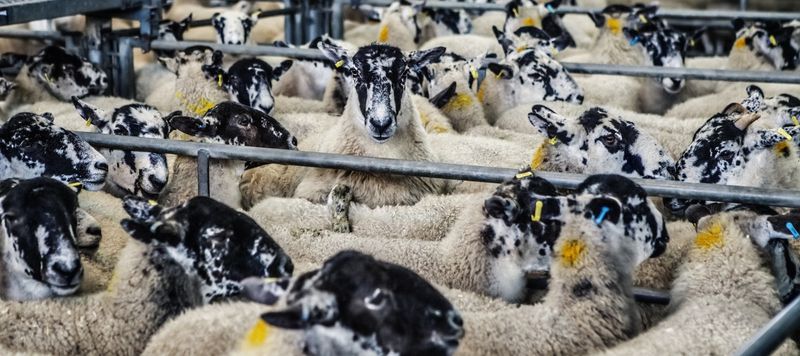
Picture keeping a dozen cats in a single kennel, where movement is restricted. Overcrowding is a harsh reality for many farm animals, particularly chickens and pigs.
These animals are packed into limited spaces, leading to disease proliferation and aggressive behaviors due to stress. The lack of space inhibits natural behaviors, causing significant welfare concerns.
For pets, such conditions would violate animal welfare laws, highlighting a clear double standard. Advocating for better living conditions in farming is crucial to bridging this ethical gap.
Lack of Veterinary Care
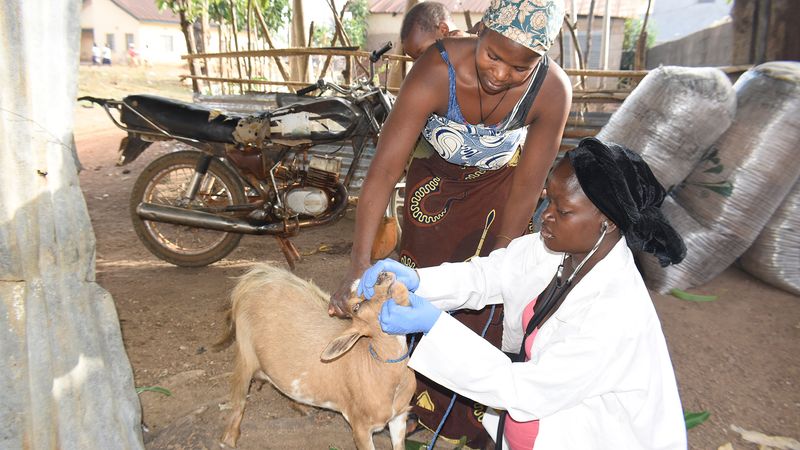
Imagine if a beloved pet were left untreated for an illness due to costs—this is often the fate of farm animals. Access to veterinary care is limited, as financial constraints prioritize profit over animal health.
Farm animals may suffer from treatable conditions due to neglected health needs, unlike pets who receive timely medical attention. This disparity in care reflects an ethical inconsistency, as all animals deserve proper health management.
Improving access to veterinary services in farming could significantly enhance animal welfare.
Slaughter Methods
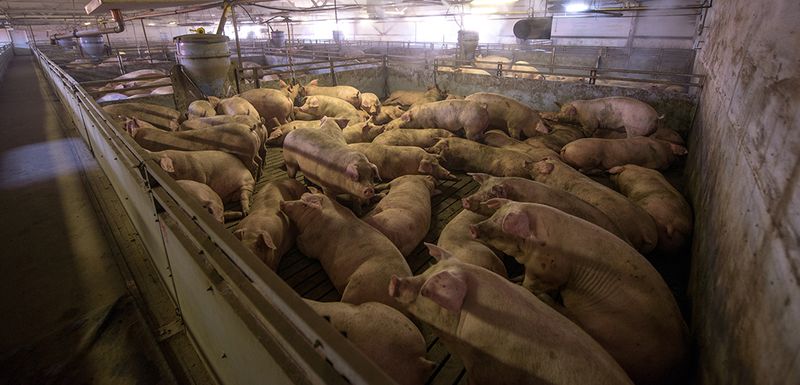
Consider the outcry if pets were subject to the same slaughter methods as farm animals, often lacking humane considerations. The process is efficient for mass production but often overlooks the animals’ suffering.
While regulations exist, enforcement varies, leading to inhumane treatment and distress. In contrast, euthanasia for pets follows strict humane guidelines to minimize pain and suffering.
This contrast in end-of-life treatment for farm animals versus pets highlights a need for consistent ethical standards across all animal industries.
Hormone and Antibiotic Use
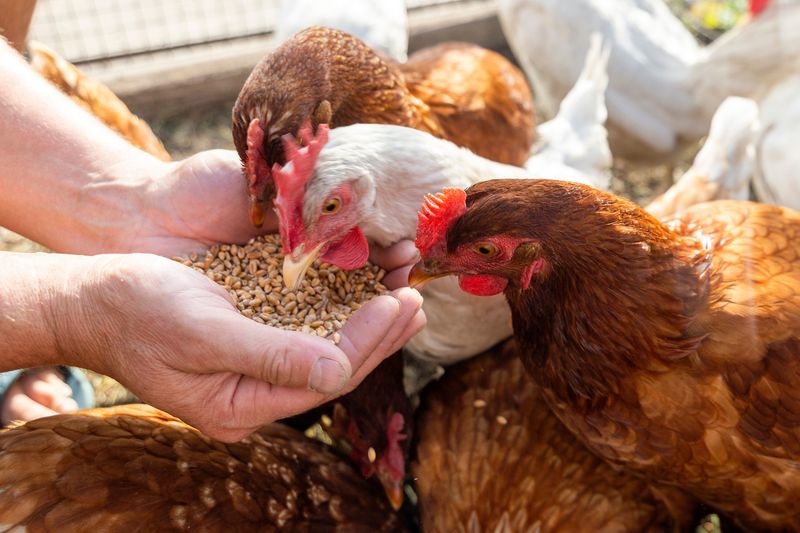
Imagine regularly administering hormones to a pet to enhance growth—a practice prevalent in factory farming to boost productivity. These substances can cause health issues and affect the quality of life.
Antibiotic overuse is another concern, leading to resistance and impacting both animal and human health. Pets receive medications aimed at care and recovery, but farm animals are subjected to routine drug use for growth and disease prevention.
This contrast underscores a need for regulation and ethical consideration in agricultural practices.
Lack of Natural Light

Imagine keeping a pet in a windowless room, devoid of natural light. Many farm animals endure similar conditions, affecting their well-being and natural behaviors.
Sunlight is crucial for physical and mental health, yet factory farms prioritize efficiency over animal welfare. Lack of exposure can lead to Vitamin D deficiency and stress.
Pets enjoy environments that mimic natural habitats, emphasizing the disparity in care. Ensuring adequate light access in farming can enhance animal quality of life and align practices with ethical standards.
Transport Conditions
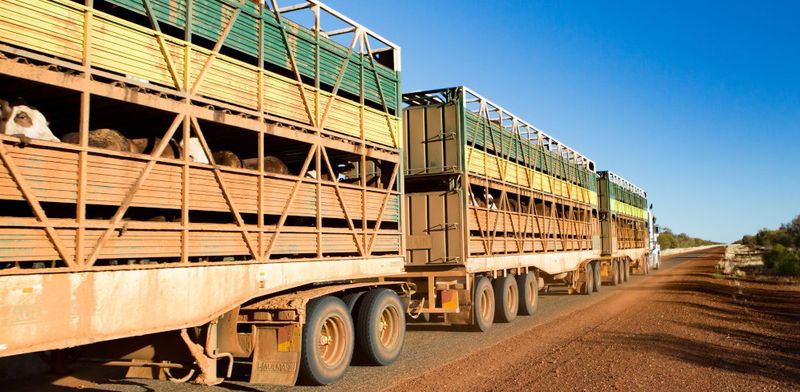
Imagine transporting a pet in a crowded, uncomfortable vehicle across long distances without breaks—a reality for many farm animals destined for slaughter. Transport conditions often fail to meet basic welfare needs.
Animals experience stress, exhaustion, and sometimes injury due to inadequate space and ventilation. Pets travel in comfort, with laws ensuring humane transport.
This disparity highlights the need for improved regulations in farm animal transport to ensure humane treatment throughout their lives.
Separation of Offspring
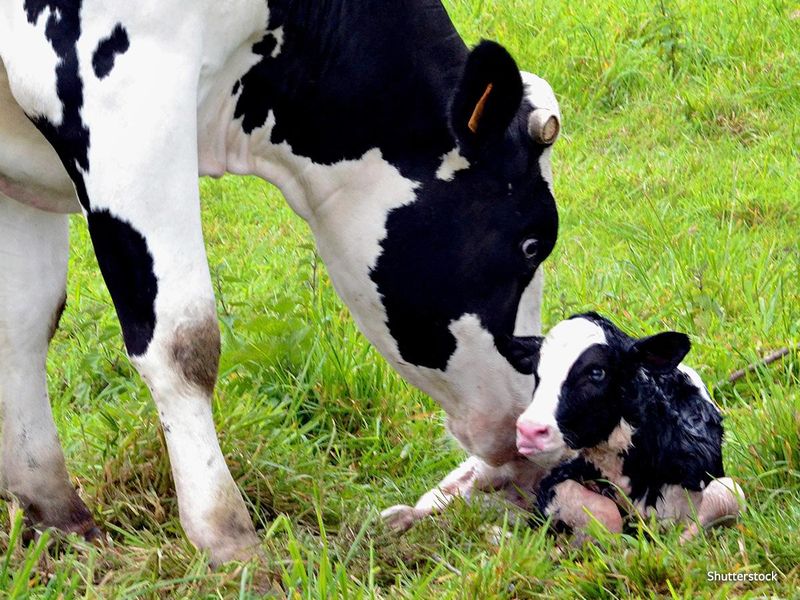
Consider the distress if a pet was routinely separated from its offspring immediately after birth. This is commonplace in farming, particularly in dairy and pork production.
Separation causes stress and affects the natural bonding process, impacting both mother and offspring. Pets, however, are allowed nurturing time, highlighting the ethical divide.
Addressing these practices in farming can promote animal welfare and align treatment standards with those applied to pets.
Breeding for Specific Traits
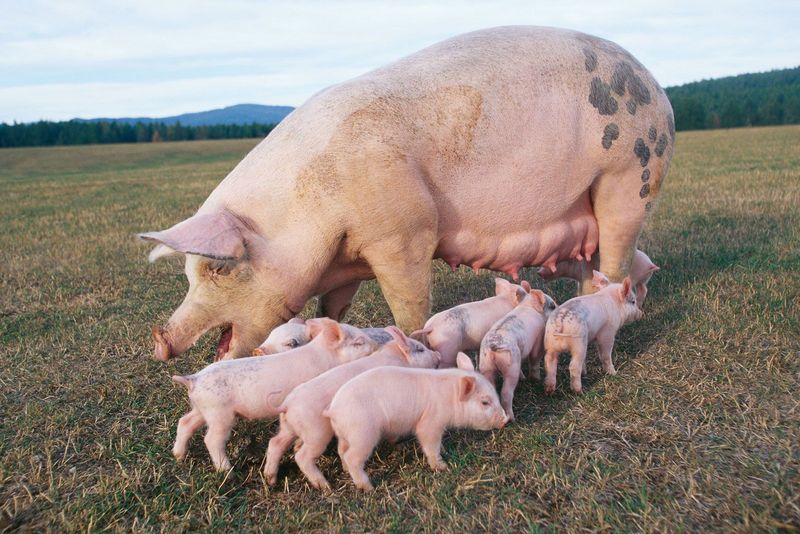
Imagine breeding a pet purely for aesthetic traits, leading to health issues—a practice mirrored in farming where animals are bred for specific characteristics like size or yield.
This often results in health problems, reducing animal welfare and quality of life. Pets are bred with health and temperament in mind, contrasting sharply with farm practices.
Re-evaluating breeding standards in agriculture can enhance animal welfare and ensure ethical treatment comparable to pets.

